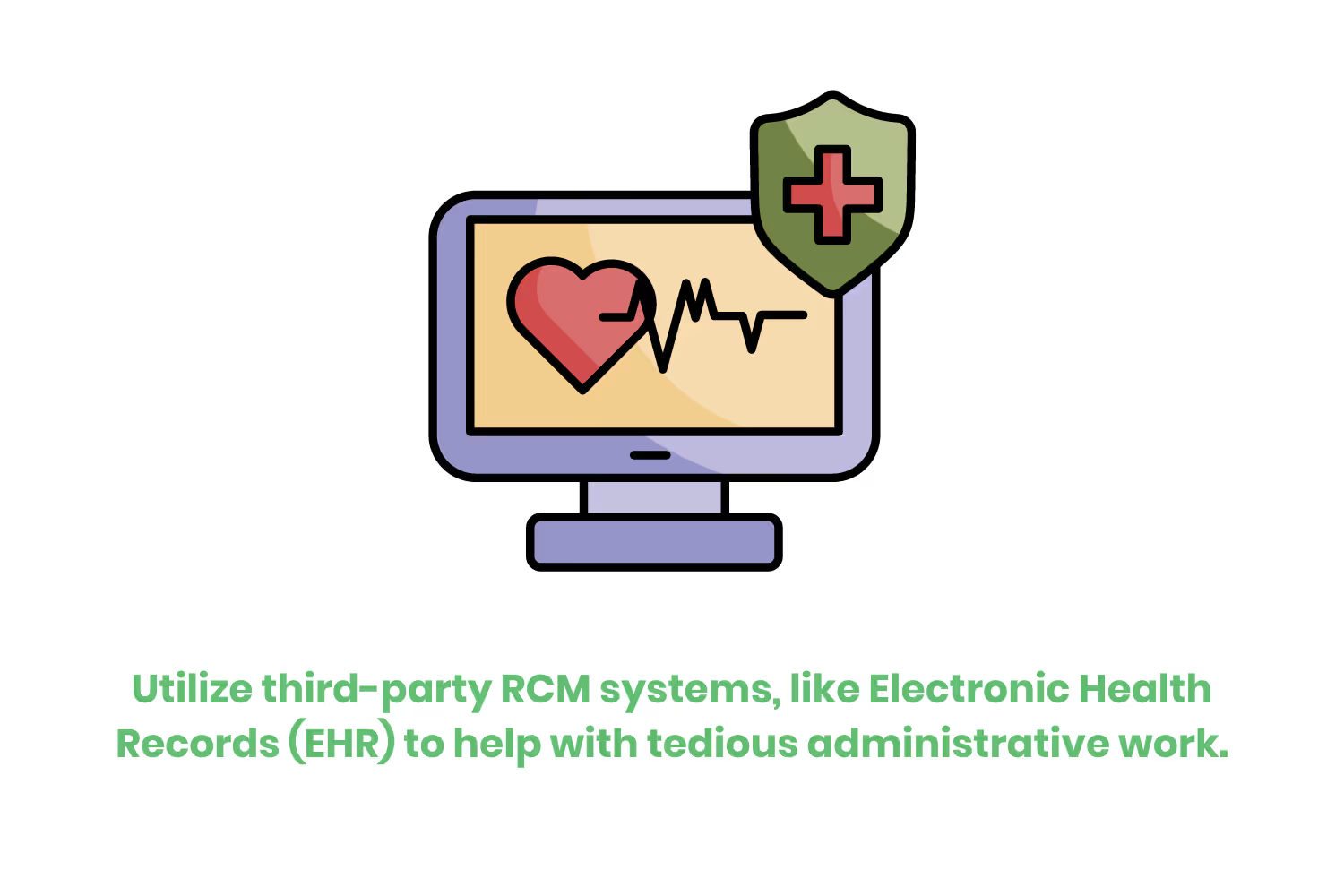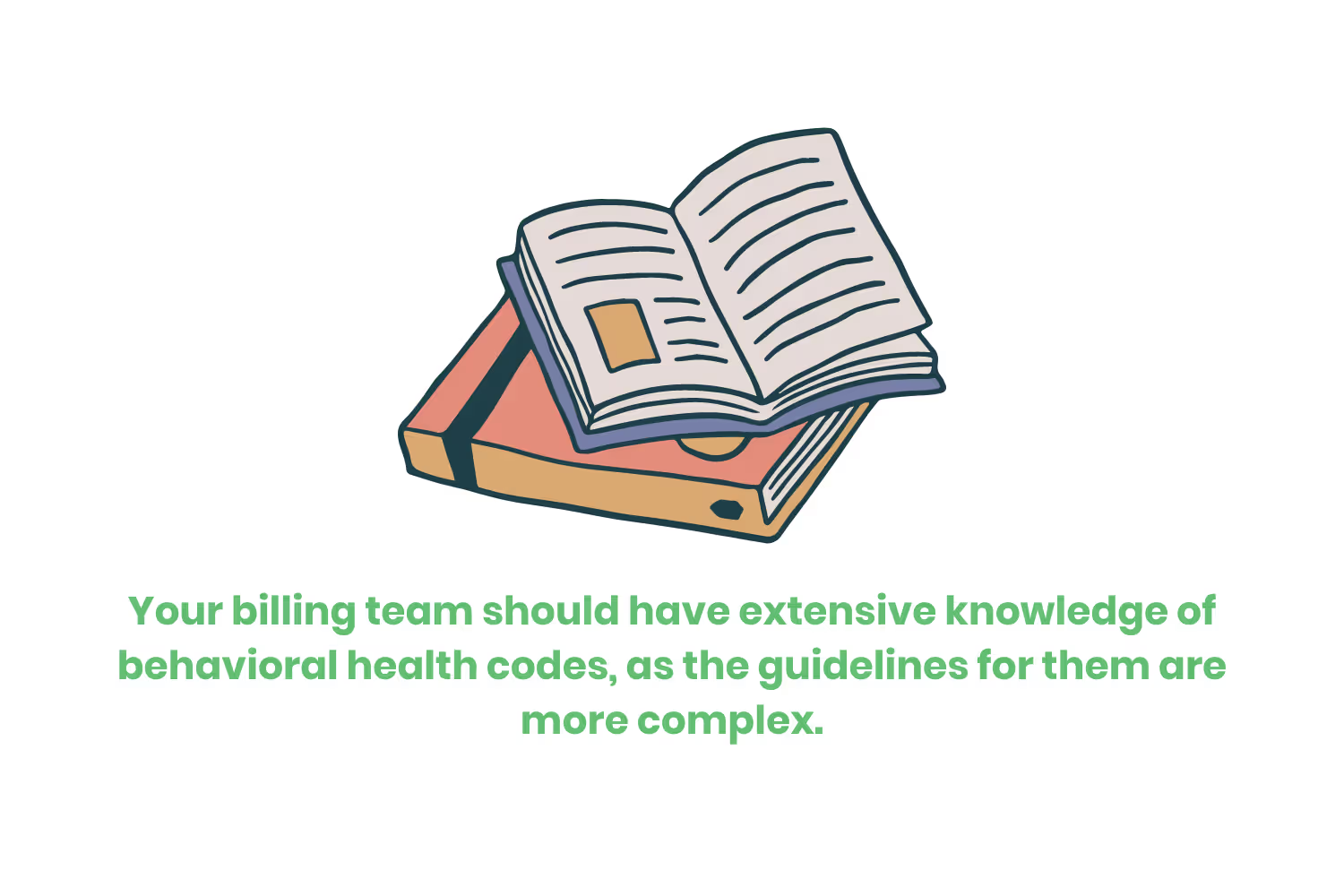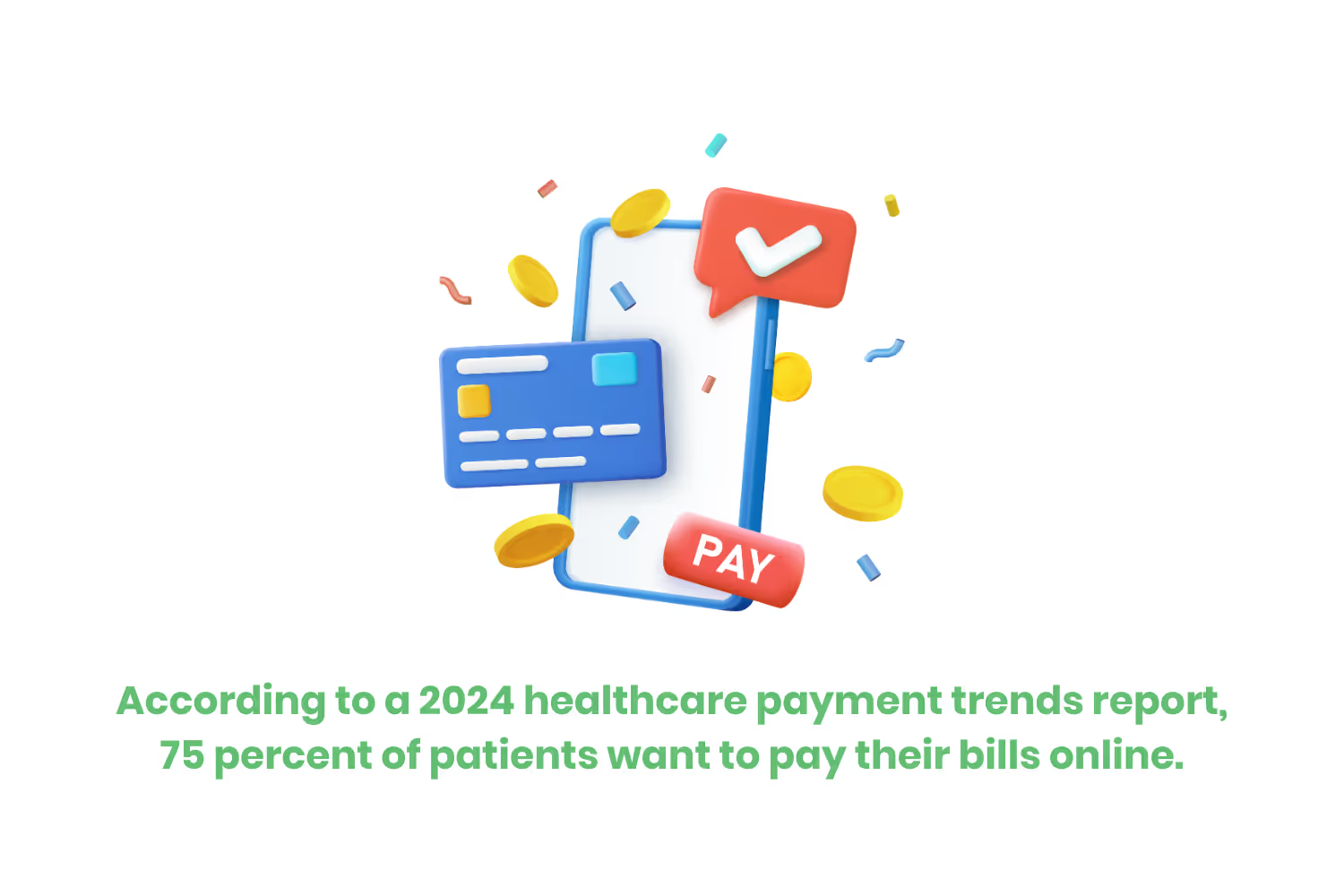Revenue Cycle Management in Behavioral Health: An Ultimate Guide
Let’s go over some of these variables and a few ways you can optimize your behavioral healthcare practice’s financial performance. All while still providing top-notch patient care.

Over 50 million Americans report having some sort of mental illness between 2019 and 2020.
However, as a society, we’re fighting against the stigma of mental illness. And this means that thankfully, we’re seeing more people feeling empowered to get help. This is why the behavioral health sector of the healthcare system is so important.
When we think about behavioral health, most people think of psychiatric visits in hospitals, or outpatient counseling sessions. But this part of the industry encompasses much more. Treatment programs that deal with everything from abuse and addiction to eating disorders. To offer these essential services, a team of highly trained professionals must be ready to hold their positions with confidence. This includes the billing and coding team.

To maintain a robust revenue cycle management (RCM) system, everyone in a behavioral health facility must work together. A streamlined and efficient process allows providers and caretakers to focus less on cumbersome billing problems, and more so on patients. This alone can help you ensure the sustainability of your practice. Not to mention positively affect your financial standing.
Specialized fields of behavioral health often face unique challenges and complexities, especially in managing revenue. That’s why a tailored approach when it comes to addressing billing and coding, compliance, and patient care is best. However, this creates certain nuances to consider with this type of revenue cycle management (RCM).
Let’s go over some of these variables and a few ways you can optimize your behavioral healthcare practice’s financial performance. All while still providing top-notch patient care.
What RCM is Behavioral Health?
So what are some of the best ways to collect on your revenue in behavioral health?
After all, you might not only receive payment directly from your patients. That’s because healthcare in this specific field can get a bit tricky. Especially when it comes to what insurance will cover and what it won’t.
The RCM lifecycle for behavioral health services is like most other healthcare specialties. It helps to identify, collect, and manage your revenue. The process follows a basic formula.

Let’s take a look at the steps in more detail:
- Pre-registration: This occurs when scheduling an appointment. Your team must also complete registration at the time of check-in, gathering all remaining patient information.
- Verification of benefits and eligibility: This step is important to determine if a patient’s coverage is active and what they will cover.
- Policy Review: Look over collection and financial policies for patients.
- Accurate charge capture: This involves the direct knowledge of behavioral health services Current Procedural Terminology (CPT) and diagnosis codes.
- Claims submission: The step most people want to do immediately.
- Resubmission: if dealing with denied claims.
- Claims assessment: Ensures codes are accurately applied.
- Remittance: This is the receipt of reimbursement for your services.
The difference is that behavioral health services often deal with multiple sessions over an extended period. Unlike other specialties whose services may be a “one and done” situation. Your billing team must also have extensive knowledge of behavioral health codes, as the guidelines for them are more complex.
This proves a whole new challenge for medical coding and billing professionals. Making sure to keep service information together and accurate for one patient over time can get confusing.
Insurers look for reasons to deny your claims, so without a clearly defined process in place, you might fall behind. To avoid financial struggle, check out these tips to ensure your revenue cycle flows smoothly.

10 Tips for a Robust RCM Process
If you want to optimize your revenue cycle, knowing the steps of the entire process helps.
Utilizing different management systems and medical billing systems helps, too. However, there are a few important tips to go over that can elevate your business operations.
Here are a few suggestions when it comes to identifying, collecting, and managing your revenue.
Tip 1: Staff Training and Education
Make sure you invest in training for your employees. This includes everyone from clinicians, to billing specialists, and administrative staff. By doing this, your team as a whole can stay up to date with constantly changing and evolving regulations.
As well as any coding changes. Keeping a regular training program on hand ensures that your team provides best practices, enhancing patient care as well as your financial health.
Tip 2: Technology Integration
The more streamlined your processes are the better. That’s why our second tip today is to lean into technology integration. This means utilizing third-party RCM systems to help take some of that tedious work off your plate!
Electronic Health Records (EHR) and practice management systems are two great examples of this. They not only help streamline workflows but improve documentation accuracy too!
Tip 3: Create & Enforce Behavioral Health Payment Policies
Things can not only become confusing for your billing staff but for patients too!.
Help everyone involved by creating set behavioral health payment policies. You can discuss a few different topics while mapping out your payment guidelines.
For example, including answers to common questions such as:
- How do you handle a no-show? Are there financial consequences?
- What are the consequences of nonpayment for services?
- What types of payment do you accept?
- For self-pay patients - how long do they have to pay?
Having a list of these policies available through pre-registration and check-in is not only a good business practice but helpful for patients as well.

Tip 4: Verification of Benefits
During the intake of a new patient, be sure to pay attention to any insurance eligibility or benefits they have.
Staying aware of these details can help you identify the following:
- Coverage limitations.
- Co-pays.
- Deductibles.
This helps facilitate transparent communication with your patients from the start. Establishing their financial responsibilities, including what they are responsible for out-of-pocket, will reduce missed payments. Capture a copy of the patient’s insurance card, if they have one, and credit card information.
Tip 5: Knowledge of Behavioral Health-Specific Codes
In the same breath as employee education, you should make sure your staff is familiar with behavioral health-specific codes.
Appropriate utilization of these codes, such as CPT and Healthcare Common Procedure Coding System (HCPCS), will help you collect your revenue faster.
Tip 6: Internal Claim Review
Before submitting your claims, make sure to engage in a thorough internal review. This way, you are less likely to deal with any long denial processing in the future. Not to mention, costly consequences.
Remember that there is a technology that is specifically meant to help with this process, such as EHRs. This way, you can scrub claims for any mistakes before sending them to the payer, reducing the likelihood of a claim denial. Thus, saving you time and money.

But don’t panic if you do receive a denial claim. The insurance company will send Remittance Advice which gives their explanation as to why they rejected the claim. You can find it attached to the reimbursement of an approved claim, along with a list of what was and wasn’t paid.
Tip 7: Collection
Have a game plan when it comes to gathering patient collections. Sure, much of your reimbursement comes from your payers, but don’t neglect the percentage that comes from patients.
Sending out bills through the mail is a good method of asking for payments. However, many patients use technology such as computers and phones. According to a 2024 healthcare payment trends report, 75% of patients want to pay their bills online.
Offering payment reminders and links to view a bill through a secure website is essential.

Tip 8: Reporting
Although it might seem superfluous, keep an eye on how you report the results of your claims.
Just because you have successfully decreased the amount of claim denials, doesn't mean you don’t need to pay attention to the accepted ones! Again, make sure to utilize an EHR system to streamline this task.
If the payers approve your claim, you want to make sure you receive all of your payments’ full detailed reports. And of course, denied claims must be quickly looked over and fixed for resubmission. Don’t lose track of what claims need attention during busy times of the month.
Tip 9: Appealing Claim Denials
Appealing claim denials can be difficult, but don’t let that stop you from facing them head-on!
To complete your reimbursement, you’re going to need to write a strong appeal letter. Sending one of these to the insurance company that denied your claim is the first step. Include all updated correct information as well as any additional details that might be helpful.
You may also want to include a section indicating why you think they are wrong if the situation calls for it. Finally, include any details of the treatment and diagnosis to explain why the charges are necessary.
Tip 10: Patient-Centric Communication
Making sure you’re clear about your billing process with your patients will make things easier for everyone. Trust us, no one likes miscommunication, especially when you involve other people’s money.
Include information about your financial obligations and any assistance programs you work with. Doing all of these things is an easy way to boost patient satisfaction and retention.
A good relationship with your clients may mean fewer payment delays and less of a burden on your team to follow up on these payments.
Conclusion
Finding success in your behavioral health practice or organization starts with a robust revenue cycle plan. The unique challenges that go hand in hand with this specialty of medicine can be a roadblock within itself - but it doesn't have to be!
Addressing insurance complexities, patient involvement/communication, and compliance requirements can unlock a more streamlined RCM system. Also, be sure to utilize the helpful third-party technologies that are currently available out there, such as EHRs and HCPCS.
These tailored strategies are inherently personalized to your business, depending on what you are looking for. Just be sure to invest in staff training to build that strong foundation of support, and from there adjust and add tools as you wish!
Emphasize your product's unique features or benefits to differentiate it from competitors
In nec dictum adipiscing pharetra enim etiam scelerisque dolor purus ipsum egestas cursus vulputate arcu egestas ut eu sed mollis consectetur mattis pharetra curabitur et maecenas in mattis fames consectetur ipsum quis risus mauris aliquam ornare nisl purus at ipsum nulla accumsan consectetur vestibulum suspendisse aliquam condimentum scelerisque lacinia pellentesque vestibulum condimentum turpis ligula pharetra dictum sapien facilisis sapien at sagittis et cursus congue.
- Pharetra curabitur et maecenas in mattis fames consectetur ipsum quis risus.
- Justo urna nisi auctor consequat consectetur dolor lectus blandit.
- Eget egestas volutpat lacinia vestibulum vitae mattis hendrerit.
- Ornare elit odio tellus orci bibendum dictum id sem congue enim amet diam.
Incorporate statistics or specific numbers to highlight the effectiveness or popularity of your offering
Convallis pellentesque ullamcorper sapien sed tristique fermentum proin amet quam tincidunt feugiat vitae neque quisque odio ut pellentesque ac mauris eget lectus. Pretium arcu turpis lacus sapien sit at eu sapien duis magna nunc nibh nam non ut nibh ultrices ultrices elementum egestas enim nisl sed cursus pellentesque sit dignissim enim euismod sit et convallis sed pelis viverra quam at nisl sit pharetra enim nisl nec vestibulum posuere in volutpat sed blandit neque risus.

Use time-sensitive language to encourage immediate action, such as "Limited Time Offer
Feugiat vitae neque quisque odio ut pellentesque ac mauris eget lectus. Pretium arcu turpis lacus sapien sit at eu sapien duis magna nunc nibh nam non ut nibh ultrices ultrices elementum egestas enim nisl sed cursus pellentesque sit dignissim enim euismod sit et convallis sed pelis viverra quam at nisl sit pharetra enim nisl nec vestibulum posuere in volutpat sed blandit neque risus.
- Pharetra curabitur et maecenas in mattis fames consectetur ipsum quis risus.
- Justo urna nisi auctor consequat consectetur dolor lectus blandit.
- Eget egestas volutpat lacinia vestibulum vitae mattis hendrerit.
- Ornare elit odio tellus orci bibendum dictum id sem congue enim amet diam.
Address customer pain points directly by showing how your product solves their problems
Feugiat vitae neque quisque odio ut pellentesque ac mauris eget lectus. Pretium arcu turpis lacus sapien sit at eu sapien duis magna nunc nibh nam non ut nibh ultrices ultrices elementum egestas enim nisl sed cursus pellentesque sit dignissim enim euismod sit et convallis sed pelis viverra quam at nisl sit pharetra enim nisl nec vestibulum posuere in volutpat sed blandit neque risus.
Vel etiam vel amet aenean eget in habitasse nunc duis tellus sem turpis risus aliquam ac volutpat tellus eu faucibus ullamcorper.
Tailor titles to your ideal customer segment using phrases like "Designed for Busy Professionals
Sed pretium id nibh id sit felis vitae volutpat volutpat adipiscing at sodales neque lectus mi phasellus commodo at elit suspendisse ornare faucibus lectus purus viverra in nec aliquet commodo et sed sed nisi tempor mi pellentesque arcu viverra pretium duis enim vulputate dignissim etiam ultrices vitae neque urna proin nibh diam turpis augue lacus.



![[ANSWERED] What is a Long-Term Care (LTC) Pharmacy](https://cdn.prod.website-files.com/67e2b8210878abcba6f91ae6/68d687806a075a1cf64659b0_WhatisLongTermCarePharmacy_925.avif)
